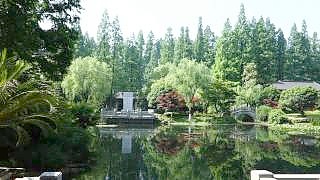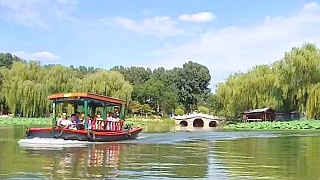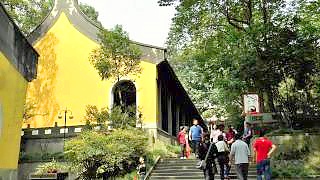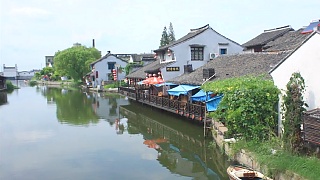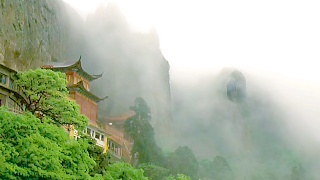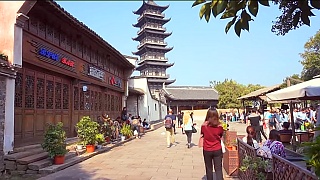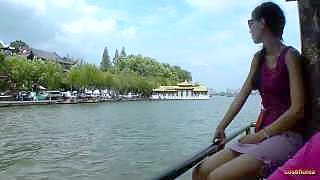With Zara Living in Hangzhou ...
[640],shadow=true,start=,stop=Welcome to Xixi Wetland Park
Experience the Natural Beauty of HangZhou
About Xixi Wetland Park
Xixi Wetland Park is a national wetland park located in the western part of Hangzhou, Zhejiang Province. Covering an area of approximately 10 square kilometers, Xixi is renowned for its rich ecological resources, scenic landscapes, and profound cultural heritage. The park is a haven for wildlife and offers a peaceful retreat from the bustling city, featuring numerous watercourses, lakes, and traditional houses.
Main Attractions
Hazy Fisher Village
Hazy Fisher Village is a picturesque area within the park that showcases traditional fishing culture. Visitors can explore the village, observe fishing demonstrations, and enjoy the serene environment.
Autumn Snow Temple
The Autumn Snow Temple is an ancient Buddhist temple situated in the heart of Xixi Wetland Park. The temple, surrounded by beautiful scenery, offers a tranquil spot for meditation and reflection.
Boating on the Waterways
Boating is one of the most popular activities in Xixi. Visitors can take a leisurely boat ride through the park's intricate network of waterways, enjoying the lush landscapes and diverse wildlife.
Traditional Houses
Xixi Wetland Park is home to many traditional houses that reflect the architectural style of the region. These houses offer a glimpse into the history and culture of the local people.
Activities
Bird Watching
Xixi Wetland Park is a paradise for bird watchers. The park's diverse habitats attract a wide variety of bird species, making it an ideal spot for bird watching and photography.
Photography
With its stunning landscapes, traditional architecture, and abundant wildlife, Xixi Wetland Park offers excellent opportunities for photography. Capture the beauty of the wetlands and the charm of the ancient village.
Walking and Cycling
The park features well-maintained paths that are perfect for walking and cycling. Visitors can explore the park at their own pace, enjoying the fresh air and natural beauty.
Seasonal Festivals
Xixi Wetland Park hosts various cultural events and festivals throughout the year, such as the Dragon Boat Festival and the Plum Blossom Festival. These events highlight the local culture and traditions.
Transport
Xixi Wetland Park is easily accessible from various parts of Hangzhou. Here are some ways to get there:
- By Bus: Multiple bus routes stop near Xixi Wetland Park, including routes 506, 193, and 310. Get off at the Xixi Wetland stop.
- By Subway: Take Line 5 to Zijingang Road Station, then transfer to a local bus or taxi to reach the park.
- By Taxi: Taxis are a convenient option, especially if you are traveling with a group or have heavy luggage. Just ask the driver to take you to Xixi Wetland Park (西溪湿地公园).
Hangzhou, located in eastern China's Zhejiang province, is renowned for its picturesque West Lake, traditional tea culture, and historic sites. Here's a guide for tourists visiting Hangzhou:
West Lake and Scenic Areas:
West Lake (Xi Hu): This UNESCO World Heritage Site is the centerpiece of Hangzhou's natural beauty, with its serene waters, pagodas, gardens, and surrounding hills. Visitors can take boat cruises, stroll along the lakeside paths, or rent bicycles to explore the area.
Leifeng Pagoda: Situated on the southern shore of West Lake, this historic pagoda offers panoramic views of the lake and the city skyline.
Lingyin Temple (Temple of the Soul's Retreat): One of the most important Buddhist temples in China, Lingyin Temple features ancient rock carvings, serene courtyards, and a large statue of Buddha.
Xixi Wetland Park: Explore the tranquil waterways, traditional villages, and lush greenery of this scenic wetland park, located on the outskirts of Hangzhou.
Tea Culture:
Longjing (Dragon Well) Tea Plantations: Hangzhou is famous for producing Longjing tea, one of China's most prized green teas. Visitors can tour the tea plantations in the nearby hills, learn about the tea-making process, and sample freshly brewed Longjing tea.
National Tea Museum: Learn about the history, cultivation, and cultural significance of tea in China at this informative museum located on the outskirts of Hangzhou.
Historic and Cultural Sites:
Six Harmonies Pagoda (Liuhe Pagoda): This ancient pagoda offers panoramic views of the Qiantang River and the surrounding countryside. It also houses a small museum showcasing Buddhist artifacts.
Hefang Street (Qinghefang Ancient Street): Stroll along this historic street lined with traditional shops, teahouses, and snack stalls selling local delicacies and handicrafts.
China National Silk Museum: Discover the art of silk production and the history of the silk trade in China at this museum, which features exhibits on silk weaving, dyeing techniques, and cultural artifacts.
Modern Attractions:
Hangzhou Grand Canal: Take a boat cruise along the Grand Canal, the world's longest and oldest canal, to admire the historic architecture and bustling waterfront scenes.
Hangzhou CBD (Central Business District): Explore the modern side of Hangzhou with its skyscrapers, shopping malls, and vibrant nightlife.
Practical Tips:
Transportation: Hangzhou has an extensive public transportation network, including buses, subways, and taxis. Bicycles and electric scooters are also popular options for getting around the city.
Weather: Hangzhou has a humid subtropical climate with hot, humid summers and mild, damp winters. Spring and autumn are the best times to visit when the weather is pleasant and the landscapes are at their most beautiful.
Language: Mandarin Chinese is the official language, but English may not be widely spoken outside of tourist areas. It's helpful to learn a few basic phrases or carry a translation app.
Hangzhou's blend of natural beauty, cultural heritage, and modern amenities makes it a captivating destination for tourists. Whether you're exploring historic sites, indulging in tea culture, or simply enjoying the tranquility of West Lake, Hangzhou offers a memorable experience for visitors of all interests.

 The awesome XiXi wetland park, HangZhou, ZheJiang province
The awesome XiXi wetland park, HangZhou, ZheJiang province


